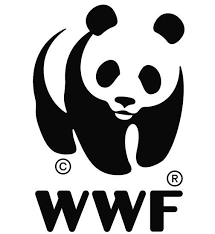India among nations that face grave danger to soil biodiversity: WWF
According to recently released Global Soil Biodiversity Atlas prepared by World Wide Fund for Nature (WWF), India among nations that face grave danger to soil biodiversity. The atlas was released as part of WWF’s biennial Living Planet Report (LPR) 2018. The key aspect of this year’s report was threat to soil biodiversity and pollinators, the two key drivers of biodiversity. These two key drivers loss were due to over exploitation of natural resources and agriculture.
Highlights of report
- Soil Biodiversity: It encompasses presence of micro-organisms, micro-fauna (nematodes and tardigrades for example), and macro-fauna (ants, termites and earthworms).
- Millions of microbial and animal species live and make up soils, from bacteria and fungi to mites, beetles and earthworms. Soil biodiversity, thus is total community from genes to species, and varies depending on environment.
- The immense diversity in soil allows for great variety of ecosystem services that benefit species that inhabit it, the species that use it and its surrounding environment.
- WWF’s ‘risk index’ for globe: It indicated threats from loss of above-ground diversity, pollution and nutrient over-loading, over-grazing, intensive agriculture, fire, soil erosion, desertification and climate change.
- India was coloured red on atlas and is among countries whose soil biodiversity faces the highest level of risk. Other countries in this category include Pakistan, China, several countries in Africa and Europe, and most of North America.

- India’s per capita ecological footprint: It was less than 1.75 hectares/person (it is in lowest band among countries surveyed). India’s high population made it vulnerable to ecological crisis, even if per-capita consumption remained at current levels.
- Pollinators: 150 million bee colonies were needed to meet the pollination requirements of about 50 million hectares of agricultural land in India, only 1.2 million colonies were present.
- Ecological loss: Population of fish, mammals, birds, amphibians and reptiles has dwindled by average of 60% from 1970 to 2014 and fresh-water species have declined by 83% in same period. Globally, extent of wetlands os estimated to have declined by 87% since 1970.
World Wide Fund for Nature (WWF)
It is international non-governmental organization working field of the wilderness preservation and reduction of human impact on the environment. It was formerly named World Wildlife Fund. It is world’s largest conservation organization with over five million supporters worldwide, working in more than 100 countries, supporting around 1,300 conservation and environmental projects. It founded in 1961 and is headquartered in Gland, Switzerland. WWF aims to stop degradation of planet’s natural environment and build future in which humans live in harmony with nature. Currently, its work is organized around these six areas: food, climate, freshwater, wildlife, forests, and oceans. It publishes Living Planet Report every two years since 1998 and it is based on Living Planet Index and ecological footprint calculation.
Month: Current Affairs - October, 2018


